In the world of gardening, there’s something magical about flowers that know how to take care of themselves.
Self-seeding flowers are a gardener’s dream, endlessly reappearing each season with minimal effort.
These botanical wonders not only embellish your garden with vibrant colors but also bring a touch of sustainability as they naturally propagate their beauty.
1. Poppies

Poppies are like nature’s confetti, scattering their seeds with the slightest breeze. Their paper-thin petals flutter gracefully in the wind, painting the garden with brilliant reds and oranges.
These resilient flowers not only bring a bold splash of color but also symbolize remembrance and peace.
With minimal intervention, poppies return year after year, surprising gardeners with their tenacity. Their seeds lie dormant until conditions are just right, bursting forth in a stunning display.
Did you know that poppies have been used for centuries in traditional medicines? Their historical significance is as deep as their roots.
2. Nigella
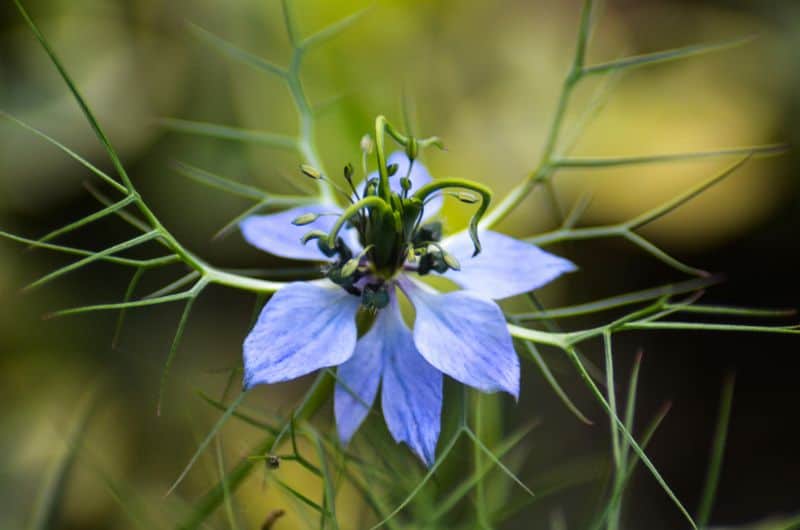
Nigella, often called Love-in-a-Mist, charms with its enchanting, feathery foliage and striking blue blooms. The unique structure of its petals makes it a standout in any flower bed.
As its blooms fade, Nigella forms intriguing seed pods that rattle in the wind, distributing seeds generously.
These flowers are easy to grow and cultivate, thriving in poor soil and full sun. Their carefree nature makes them a favorite among busy gardeners.
Fun fact: Nigella seeds are often used as a spice in Indian cuisine, adding a peppery note to various dishes.
3. Calendula
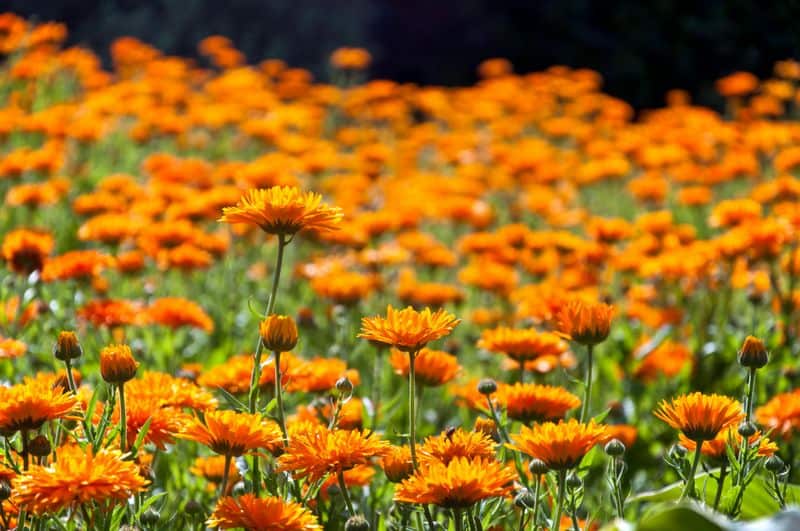
Calendula, or marigold, is a beacon of sunshine in any garden. Its bright orange and yellow flowers resemble miniature suns, providing warmth and cheer.
Known for their versatility, these flowers are not only ornamental but also edible, often used in salads and teas.
Calendula self-seeds readily, ensuring a constant display of blooms. The process is delightful to watch, as seed heads dry and disperse.
Historically, calendula has been used for its healing properties, treating skin ailments with its soothing petals.
4. Foxglove
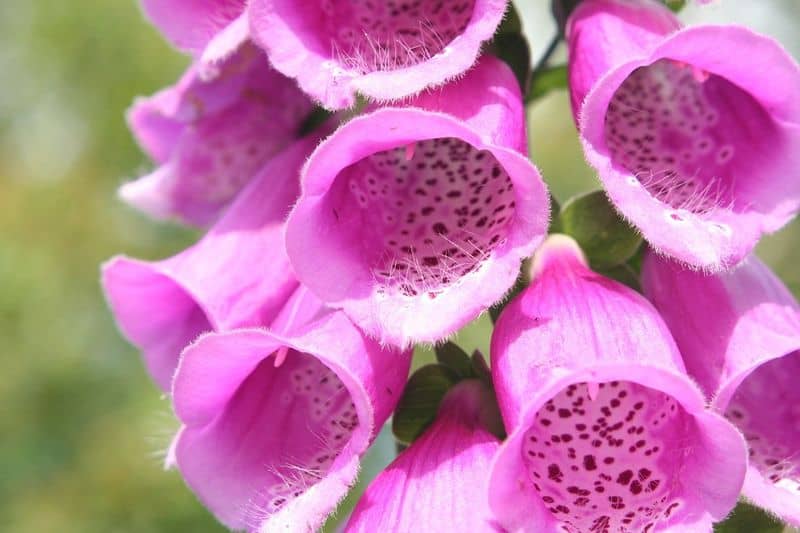
Foxglove towers in the garden with its majestic spikes adorned with bell-shaped flowers. These towering plants bring a touch of the wild with their woodland charm.
While foxglove demands respect due to its toxic nature, it rewards with stunning beauty and a haven for pollinators.
The self-seeding prowess of foxglove ensures it returns to grace the garden year after year. Each plant produces thousands of seeds, effortlessly spreading its enchanting presence.
Foxglove has been crucial in heart medicine, despite its toxic properties.
5. Borage
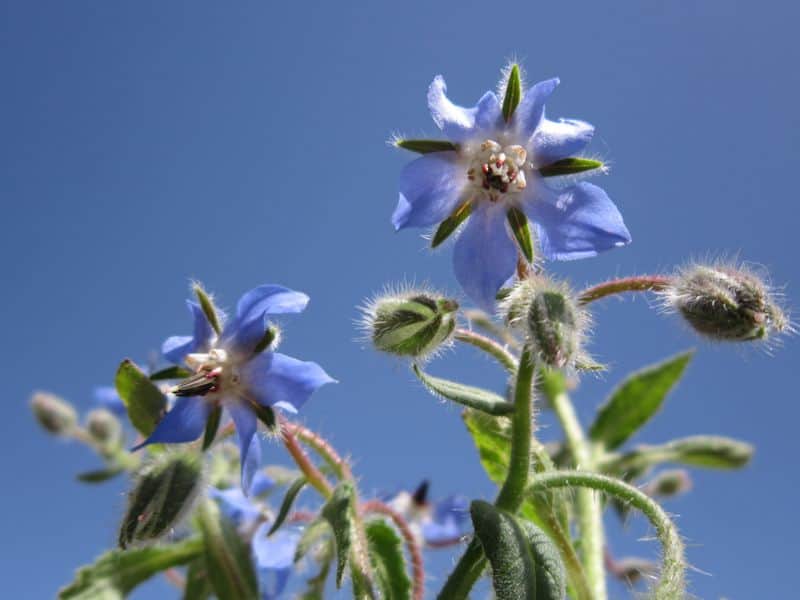
Borage, with its star-shaped blue flowers, adds a touch of celestial beauty to gardens. Known for attracting bees, it plays a crucial role in pollination.
These charming flowers are not just visually appealing but also add a cucumber-like flavor to summer drinks.
As a self-seeder, borage fills garden spaces with ease, its seeds sprouting with the changing seasons. The plant’s leaves and flowers are both edible, offering a unique addition to culinary creations.
Borage was used to give courage to warriors before battle.
6. Cosmos
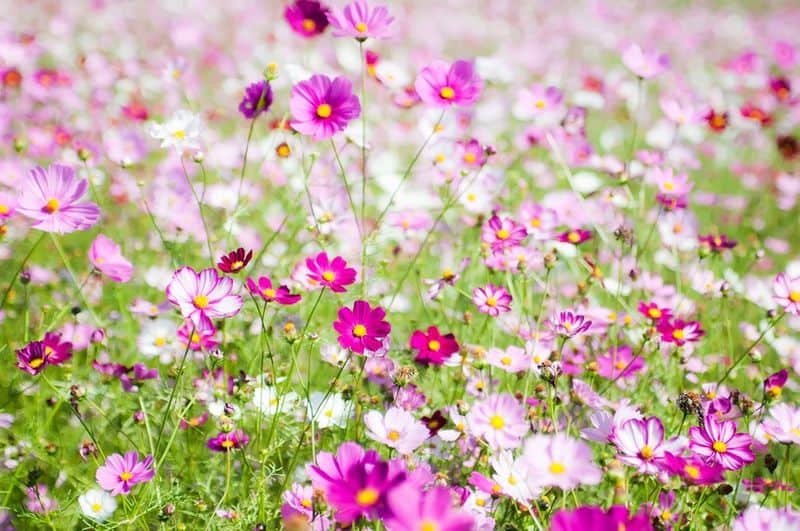
Cosmos flowers embody the essence of simplicity and grace, with their delicate petals and fern-like foliage. These flowers create a whimsical garden atmosphere with minimal fuss.
Blooming profusely in pinks, whites, and purples, cosmos are a favorite among butterflies.
Once established, cosmos are prolific self-seeders, carpeting gardens with their charming presence. The seeds are easy to collect and share, spreading joy among gardeners.
Did you know that the name ‘cosmos’ comes from the Greek word for harmony? They truly bring balance to any garden.
7. Forget-me-nots
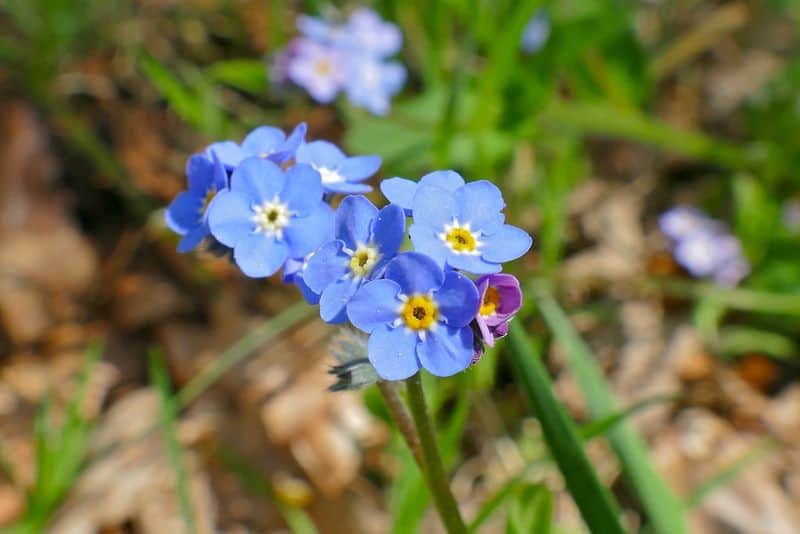
Forget-me-nots weave a tapestry of memories with their charming clusters of sky-blue flowers. These delightful blooms create a carpet of color in shady areas, thriving where others may not.
Prolific self-seeders, forget-me-nots spring to life each spring, as if whispering a gentle reminder to remember them. Their seeds disperse effortlessly, ensuring a consistent floral display.
These flowers have been a symbol of love and remembrance for centuries, often featured in poetry and art.
8. Larkspur
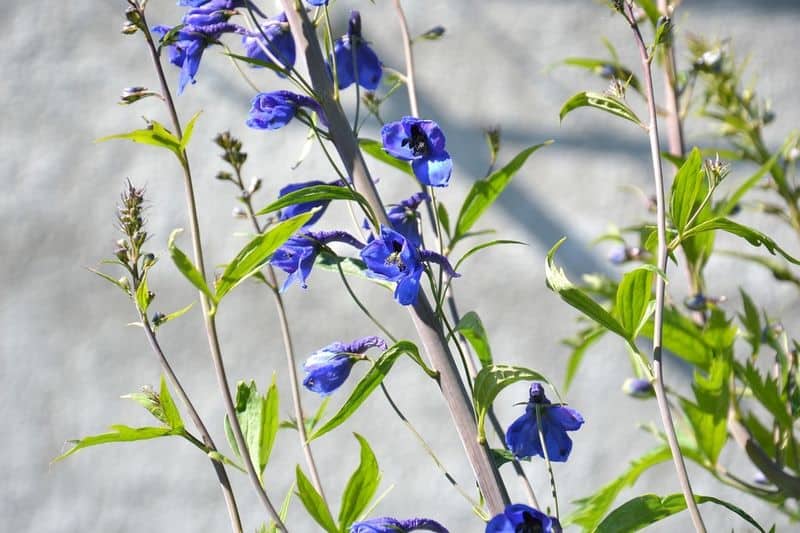
Larkspur, with its tall, elegant spikes of blue and purple blooms, adds vertical interest to any garden.
These striking flowers sway gracefully in the breeze, bringing a touch of elegance to borders and beds.
Self-seeding with ease, larkspur ensures a yearly display of its vibrant spikes. The seeds are best sown in late autumn, ready to surprise gardeners in spring.
Historically, larkspur has been used for its medicinal properties and even as a dye. Its legacy is as rich as its color.
9. Hollyhocks
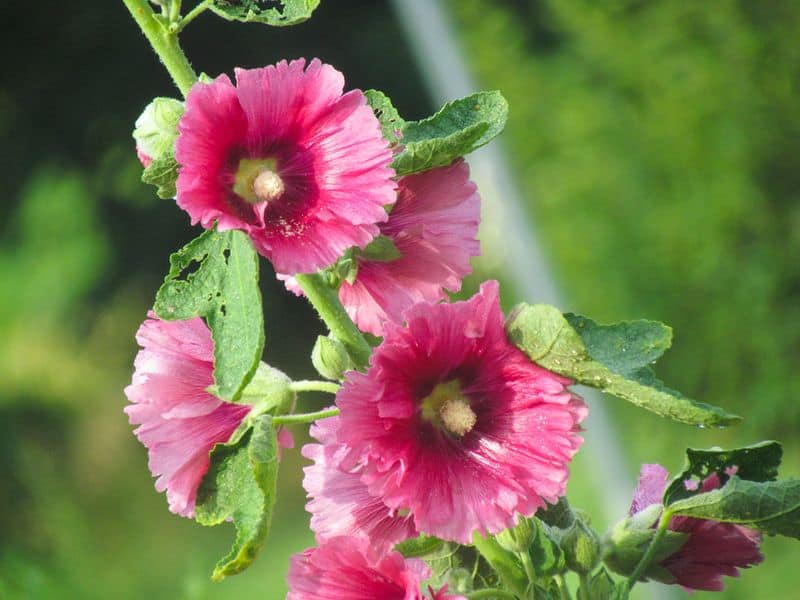
Hollyhocks stand tall and proud, with delicate, papery blooms reaching for the sky. These cottage garden favorites come in a spectrum of colors, adding nostalgic charm.
However, hollyhocks’ allure goes beyond appearance; they’re also excellent at self-seeding.
Once established, hollyhocks ensure a continuous floral display with minimal effort. Their seeds scatter readily, taking root in the most unexpected places.
Did you know hollyhocks have been cultivated since ancient times for both beauty and practical uses?
10. Cornflowers
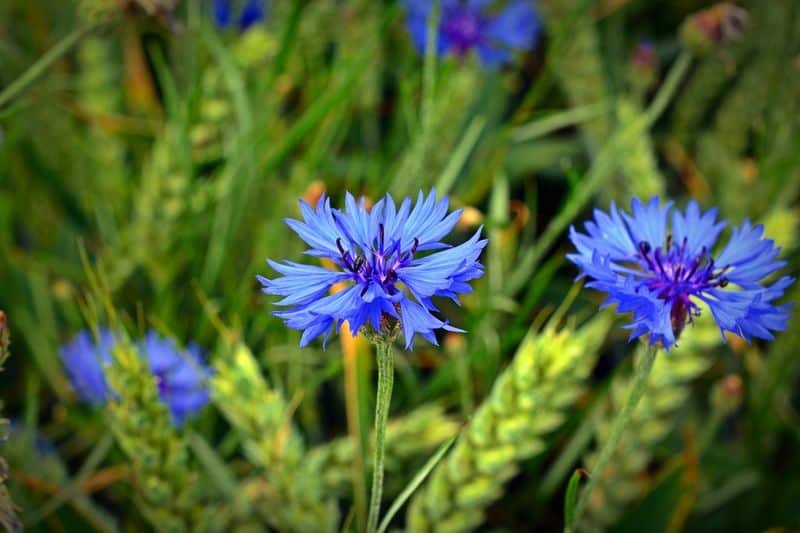
Cornflowers are like a breath of fresh air, with their crisp blue petals standing out against a sea of green.
These wildflowers bring a burst of joy and are a favorite among pollinators.
Renowned for their easy self-seeding nature, cornflowers return each year with minimal gardener intervention. Their seeds scatter naturally, ensuring an annual display of color.
Cornflowers have a rich history, once worn in the buttonholes of European soldiers as a symbol of hope.

